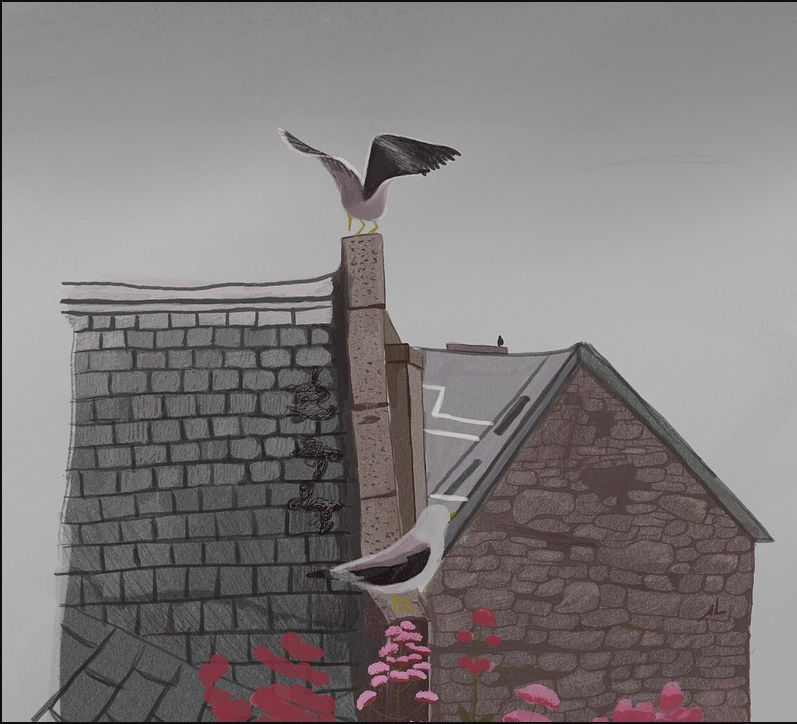Toronto’s lake-effect weather brings frequent freeze–thaw cycles, wind-driven rain, and rapid temperature swings. These conditions are tough on brickwork and chimneys. This guide explains how masonry systems work, why deterioration happens, and what maintenance and repair methods extend service life—so owners can plan evidence-based care for their buildings.
How Brick Masonry Works
A brick wall is more than stacked units. The mortar bonds bricks together and cushions micro-movement; joints shed water when properly tooled; weep holes and cavities let moisture drain; and flashings redirect water out of the assembly. In heritage work, compatible (often lime-bearing) mortars are intentionally softer than the brick so the joint, not the unit, is the “sacrificial” element.
Why Deterioration Occurs
- Freeze–thaw cycling: Moisture in pores freezes and expands, widening cracks and causing spalling.
- Salt loading: De-icing or marine salts crystallize within the masonry, stressing surfaces and joints.
- Incompatible mortars: Hard, dense mortars on soft brick force movement into the unit, accelerating damage.
- Blocked drainage: Clogged weeps, missing through-wall flashing, or sealed faces trap water inside the wall.
- UV and thermal movement: Daily expansion/contraction opens micro-gaps that admit water.
Inspection Checklist (Exterior & Interior)
Walk the envelope each spring and fall with a camera or notebook:
- Mortar condition: Recessed, powdery, or cracked joints; missing pointing at parapets and sills.
- Brick faces: Flaking (spall), bulging, or dripping white salts (efflorescence).
- Movement cues: Stair-step cracking along joints or diagonal cracking from openings.
- Water paths: Failed caulking at penetrations, stained lintels, or absent drip edges.
- Interior clues: Damp smells after rain, peeling paint near exterior walls, or fireplace staining.
Prioritizing Repairs
Not every crack is structural, but any uncontrolled water path deserves attention. A practical sequence:
- Stop active leaks: Verify roof, flashing, and drainage before cosmetic work.
- Repoint deteriorated joints: Cut out to sound depth, match sand, color, and compressive strength, then tool joints to shed water.
- Replace failed units: Swap spalled or fractured bricks with size/absorption matches; avoid spot “hard patches.”
- Rehabilitate details: Restore through-wall flashing at shelf angles, add drip edges to stone/concrete caps, and reopen weeps.
When scopes broaden—e.g., widespread spalling, bowing veneers, chronic wetting—plan diagnostics (borescope, moisture mapping) before committing to large restorations. For Toronto code and climate context, a Toronto Masonry Contractor can help evaluate assemblies and select compatible materials.
Chimney-Specific Risks
Chimneys live above the roofline, so exposure is extreme. Common failure points include cracked crowns, missing/undersized caps, open mortar joints, and failed step or counter flashing. Interior symptoms—sooty moisture, musty odors after storms, or flakes in the firebox—often trace back to exterior water entry rather than flue gases alone.
Effective chimney remediation addresses the system, not just one component: crown reconstruction with proper drip edges, cap installation, joint repointing, brick replacement where saturated, and correctly layered flashing tied into the roofing. For safety and moisture control, resources focused on Toronto chimney repair outline typical scopes and inspection priorities.
Preventive Measures with High ROI
- Drainage: Maintain positive grading; extend downspouts well beyond splash zones; keep window sills and coping stones sloped with visible drips.
- Breathable repellents: Where appropriate, use silane/siloxane treatments that reduce absorption without trapping vapor. Avoid film-forming sealers on historic brick.
- Salt management: Limit de-icing salts against walls and steps; rinse spring residues from lower courses.
- Thermal joints: Long, uninterrupted runs may need expansion joints to control cracking.
- Vegetation control: Keep ivy, vines, and planters off masonry surfaces to prevent hidden wetting and root intrusion.
Material Compatibility Matters
Successful repairs match more than color. Mortar selection should consider compressive strength, permeability, and flexibility relative to the brick. Tools and methods matter too: over-deep grinding can undercut arrises; aggressive power-washing can drive water into the wall or erode soft joints; dense cement patches can create rigid islands that concentrate stress.
Seasonal Strategy for Toronto
Spring: Survey for winter damage; document efflorescence patterns; schedule chimney and flashing inspections.
Summer: Execute repointing and unit replacements for best curing; replace or repair crowns and caps; correct drainage details.
Fall: Clear gutters/weep paths; confirm cap screens; apply breathable repellents if specified; touch up grade-level parging.
Winter: Avoid heavy exterior work; monitor interiors for new moisture clues; plan spring scopes and material matches.
Cost & Planning Notes
Preventive work is consistently cheaper than emergency repairs. Budget cycles that include periodic repointing (exposure-dependent), cap/crown upkeep, and localized unit swaps prevent wholesale façade replacements. Keep a maintenance log—photos, mortar recipes, product data—to streamline future matching and tendering.
Key Takeaway
In Toronto’s climate, masonry longevity hinges on moisture management, compatible materials, and timely joint and chimney care. A structured inspection routine, targeted repairs, and detail-driven preventive work keep envelopes resilient while respecting original fabric.


